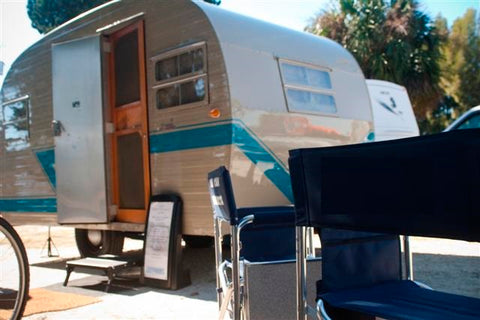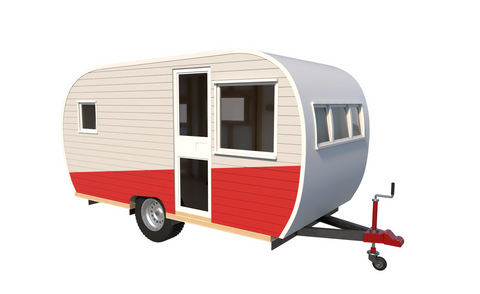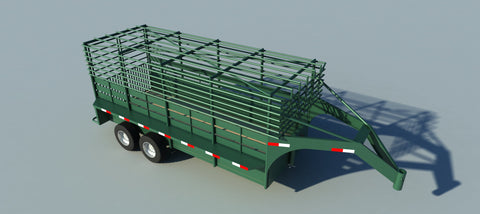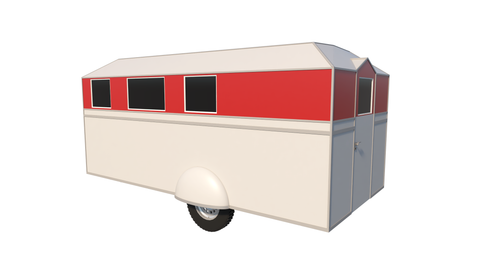Build Your Own Utility Trailers Plans DIY Open Lawn Cargo Carrier 6' x 10'
These Utility Trailer Plans will show you how to build your own Utility trailer. This is a simple and sturdy design. This is a common design used throughout the country. I designed it to use a 3500lb axle with 205/75-R15 Tires. I use mine at least once a week for something. With a little skill you can build this yourself and save hundreds of dollars.
What are Utility Trailer Plans?
The 1960s set the stage for the youth-oriented culture of the era. As Americans marveled at the moon landing and Neil Armstrong walking on it, idealists took action for civil rights and voting equality. Students staged sit-ins to protest the Vietnam War and a new generation of women resisted traditional housewife roles. The construction of the Federal Highway System accelerated the growth of the trucking industry. With this new energy and enthusiasm, the use of utility trailers soared.
Open or enclosed
The first thing to consider when choosing a utility trailer is whether you'd like an open or enclosed model. Open utility trailers are easier to maneuver and more versatile than enclosed trailers. An open trailer offers more visibility, making it a better choice for hauling tall or odd-shaped items. Open utility trailers are also lighter than enclosed trailers, making them easier to tow. You can also find more tow vehicles that can handle an open utility trailer.
Increased payload space
A utility trailer increases payload space by allowing you to expand the size of your cargo. Depending on the model, you can add an enclosed tarpaulin or cargo divider to provide extra space for the payload. Enclosed trailers are more expensive than open trailers, but they are also much bulkier and require more power than an open trailer. These trailers are a great choice for carrying heavy cargo.
Reduced tare weight
When it comes to the efficiency of a utility trailer, reduced tare weight is often a top priority. It's just as important as the tractor itself and deserves the same attention when spec'ing. Although trailers' appearance hasn't changed drastically in recent years, the materials and options have been developed in response to tight fleet margins. Here are some of the reasons why reduced tare weight may be a good idea.
Easy to load
Installing a winch on an easy to load utility trailer is an excellent idea. A winch saves the user's back and eliminates the need for a helper. All that's needed is a long rope or winch strap to be wrapped around the object to be transported. The strap is then cranked towards the front of the utility trailer until the weight is balanced. A 20-ft. pull strap and hook cost about $35 to $40 and can be purchased at most hardware stores. It is important to remember to secure the winch strap with a locknut and tie it to the trailer's frame.
Cost
A utility trailer can vary in price, depending on the size and features that it has. For example, a lightweight 5'x12' single-axle utility trailer may cost less than $200, while a larger one might cost as much as $2,000 or more. A flatbed utility trailer can typically hold 3,000 pounds, and can be assembled by a homeowner with a basic understanding of mechanical principles. To get an idea of cost, consider purchasing a utility trailer kit. You can buy a 40-inch utility trailer kit on Amazon for about $200 and assemble it yourself if you have some mechanical skills. Another option is purchasing a 4'x8' folding trailer kit from Northern Industrial, which costs between $1,750 and $2,000.
History
The history of the utility trailer begins in 1905 when the brothers Bennett decided to build the first commercial trailers for use in agricultural operations. The Bennett brothers used cheap parts to build a crudely designed trailer that could only fit about sixty bales of cotton. They wanted to build a better trailer using better materials and crafted by more experienced craftsmen. Their first attempt was so successful that they later became America's first trailer manufacturer. The company eventually became the largest trailer manufacturer in the country.
All plans are designed by Ben Stone. Ben is a retired Engineer in Canada. Ben also drafts these himself using the latest AutoCAD software to ensure accuracy. He studied Engineering back in the early 1980's. After over 30 years in the Construction industry he developed a passion for building cool items around his farm and cabin. These are great DIY projects. With a little skill anybody can Do It Yourself. Ben is always a email away if you have any questions while building one of his projects. He is adding new plans all the time.









